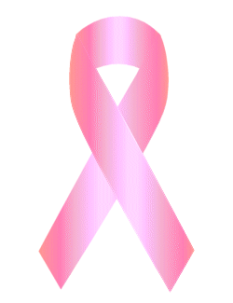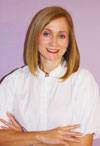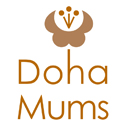Sadly, it seems that everyone knows someone who has been affected by breast cancer. And many know someone diagnosed with advanced stage breast cancer or worse someone who has died from the disease. According to the National Cancer Institute, breast cancer is the leading cause of cancer death in women ages 15- 54. In honor of Breast Cancer awareness this month, I wanted to write a blog to review the risk factors for breast cancer along with reviewing the relatively new screening guidelines for non-high risk women ages 40-49.
In November of 2009, the guidelines as we know them (as Family Physicians) were changed by the United States Preventative Services Task Force (USPSTF). The change led to an uproar and then they were revised. USPSTF is just one of many organizations that put out guidelines about when to screen a woman for breast cancer. The US Preventative Services Task Force is an “independent panel of non-Federal experts in prevention and evidence-based medicine and is composed of primary care providers”. These experts “conduct scientific evidence reviews of a broad range of clinical preventive health care and develop recommendations for primary care clinicians”. What you should read into this is that they are unbiased.
I attended a lecture recently about breast cancer screening to ensure my knowledge was fresh and to see if I can add anything to my counseling sessions with my patients. I left the lecture even more confused about what to do. With a little time and more review, my thoughts on the matter are clearer. Here is the recommendation with more explanation to follow: The USPSTF recommends against screening mammography in women aged 40-49 years. The decision to start regular, biennial screening mammography before the age of 50 years should be an individual one and take into account patient context, including the patient’s values regarding specific benefits and harms. You can view all of their recommendations at: http://www.uspreventiveservicestaskforce.org/uspstf09/breastcancer/brcanrs.htm What does this mean? Or, one might say this recommendation is preposterous won’t it miss some women’s breast cancer? The USPSTF is not saying to stop screening all 40-49 year olds but to individualize the choice.
Before this change, in the US, we were recommending screening mammograms yearly starting at the age of 40 (in non high risk women) as well as asking women to consider a baseline mammogram between the ages of 35 and 40. Some organizations still uphold this prior recommendation: The American Cancer Society(ACS), The American College of Radiology(ACR), as well as the American College of Obstetricians and Gynecologists (ACOG). To take a look at some worldwide recommendations, the Australian Government’s Department of Health and Aging along with the United Kingdom’s National Health Service recommend screening mammograms starting at age 50. While in New Zealand, free mammograms are offered to all women ages 45-69. Here in the Gulf screening is recommended at the age of 50. For other country specific recommendations, you may look at the Geneva Foundation for Medical Education and Research website: http://www.gfmer.ch/Guidelines/Breast_diseases/Breast_cancer_screening.htm . In medicine, the pendulum swings in regard to recommendations. All of these current recommendations will continue to change as the evidence does.
Before we look at the benefits and harms, we will discuss who is at high risk? Age, ethnicity, family history, genetic predisposition, and estrogen exposure are the major risk factors for breast cancer in women. 1 in 69 women in their 40’s will be diagnosed with breast cancer. The incidence rises every decade to approximately 1 in 14 by the 70’s. About 1 in 8 women in the United States will develop invasive breast cancer over the course of her lifetime. Having one first-degree relative (mother, sister, or daughter) with breast cancer approximately doubles a woman’s risk. Only 5-10% of breast cancers are caused by inherited mutations of the BRCA1 or BRCA2 gene. But, the risk for breast cancer can be as great as 85% in one’s lifetime if you are found to carry a mutation. Having one of these genetic mutations also increases your risk for ovarian cancer. 1 in 40 of persons with Eastern European Jewish ancestry carry either a BRCA1 or BRCA2 gene mutation. Other factors which make a women high risk are: having a first-degree relative with a BRCA1 or BRCA2 gene mutation who have not had genetic testing themselves, having a lifetime risk of breast cancer 20 to 25%or greater, prior history of radiation therapy to the chest between the ages of 10 and 30 years, and having a genetic disease such as Li-Fraumeni syndrome, Cowden syndrome or Bannayan-Riley-Ruvalcaba syndrome, having first-degree relatives with one of these syndromes or having male relatives (1st, 2nd or 3rd degree) affected with breast cancer. All of these high risk women will need to be screened differently than is discussed in this article. Additional risk factors include: early age (<12 years old) at the start of your menstrual cycle (menarche), having your first baby after the age of 30, developing menopause at an older age (>55), drinking 2 or more alcoholic drinks per day, history of a benign breast biopsy, and history of atypical hyperplasia on breast biopsy. One study showed an increased risk of breast cancer with the use of oral contraceptives. Two other factors to consider are 1)that your paternal family history is just as important as your maternal and 2)the age of the breast cancers in affected relatives is important. The later could change your risk and impact when a physician would refer you for your first mammogram. Generally, a person would start having mammograms 10 years before the earliest diagnosis in their family including 1st, 2nd and 3rd degree relatives. Factors that are protective against breast cancer are exercise, breastfeeding (for at least 16 months), having a postmenopausal Body Mass Index (BMI) of less than 23, having 5 or more children, taking aspirin more than once a week, and having your ovaries surgically removed before the age of 35.
How do you find out what your breast cancer risk is? There are multiple breast risk assessment calculators that have been developed. One such calculator is called the “Gail Model” after its developer Dr Mitchell Gail at the National Cancer Institute. I say this cautiously as it was created for health care providers. If you calculate your risk, I would encourage you to discuss your results with your physician so you can make the best choice for you about screening mammography. Here is the link to a modified Gail model (it has fewer questions than the original calculator: http://www.cancer.gov/bcrisktool/. If you use the calculator, know that your calculated risk can change as two things change: 1) The evidence changes or 2) Your personal medical history changes. There are other risk calculators out there which will give you different results just to confuse things further. A dear friend of mine is a breast cancer genetics counselor. She likes to use the Claus Model and the Tyrer-Cuzick model “which consider 2nd and 3rd degree relatives which is also very important”. “The importance of meeting with a health care provider who has expertise in assessing risk cannot be emphasized enough.” I used the calculator on the National Cancer Institute’s website in 2009 and had a less than average risk of breast cancer then. Now, my risk is greater than average. My history has not changed, the evidence has. Here is an instructional video showing you how to calculate your own risk using the “ modified Gail Model” with a brief explanation of the results. Remember to go to full screen when you watch the video.
If you are not at high risk then what kinds of things do you need to discuss with your doctor before making the decision whether to have a mammogram before the age of 50? The harms vs. benefits! The potential benefits to screening can be reducing death from breast cancer and increasing survival. The potential harms are: radiation exposure, pain during the mammogram, anxiety over inconclusive results, false positives leading to additional testing and potentially unnecessary biopsies, and false negative results. For women ages 40-49, 3.2 deaths occurred per 1,000 women who were NOT screened with mammography. For women 40-49 who were screened 2.9 deaths occurred. What this means is that less than 1 of these women who had a mammogram will not die of breast cancer as compared to women who have never had a mammogram in this age range. Although, the ACR (American College of Radiology) noted that there is one case of invasive cancer found for every 556 mammograms performed in women in their 40’s. Not screening will therefore miss some cancers. You may say well then why not screen everyone? The goal is to reduce the harms while at the same time increasing the benefits which is quite a fine line. There are new technologies on the horizon that may soon be added to mammography which will make the benefits in mammography before 50 outweigh the risks. Digital tomosynthesis (only available for research purposes for now) takes multiple pictures (opposed to mammography which takes 1 picture in 2 directions: top to bottom and side to side) from many different angles creating a 3-D image of the breast using very little pressure. Researchers believe this will make cancers easier to see and more comfortable.
The amount of radiation from one mammogram is low and equivalent to 2 ½-3 months of your everyday environmental exposure. In regard to pain and anxiety, only you as the patient can judge how these two factors will be to you.. What kind of reaction do you think you may have to inconclusive or abnormal results? This may a bit hard to gauge when you are not in the situation. You may ask yourself: How well have you coped with medical diagnosis in the past or how to do you respond to stressors in general? I will have to say that I have had a small percentage of patients who were consumed with an inconclusive or abnormal mammogram result which required additional testing and sometimes biopsy. These women became almost non-functional in their day to day life until their workups were complete.
Let’s talk about how good a mammogram is at screening, and the false positives and negatives. Of all mammograms performed, 90% will come back without evidence of cancer. 10% will require further testing with additional views or ultrasound. With the additional testing, 85% will be normal and 15 % will require biopsy. However the total percentage of patients requiring biopsy is only 2%. Of all the biopsies performed, 80% will be normal and 20% cancerous. As you can see a mammogram can result in false positive results (around 10% in 40-49 year olds) and can lead to unnecessary biopsy. False negative results also occur at a rate of 8-10%. Despite not being 100% accurate, mammography has reduced the rate of death from breast cancer in the United States by 30% since 1990.
When I started this article, I wanted to completely uphold the new guidelines by the USPSTF as their standards have been the ones I routinely use. And to a certain extent I will. The new guidelines are not saying don’t offer mammograms to your 40-49 year olds but instead discuss whether a screening mammogram is right for their situation and allow the woman to make an informed decision. Here is where it makes it hard for me to fore go mammography before 50: as stated above, 1 invasive breast cancer is found for every 556 mammograms performed in the United States on women in their 40’s. Additionally if you start screening at age 50, you would sacrifice 33 years of life per 1,000 women screened that could have been saved if screening had started at 40. Lastly, doing biannual mammograms for women over 50 would miss 19-33 percent of cancers detected by yearly screening.
You may want to know what would I do? I know I should say it doesn’t matter what I would do as my risk is different than yours. However, I will share. Prior to the new guidelines, I started with a baseline mammogram at the age of 35, had another at the age of 38 and then another at the age of 41(not being able to have one at 40 as I was breastfeeding). I always planned on having yearly mammograms from the age of 40. After the guidelines were initially released, I had considered changing to biannual exams until the age of 50 and then going to yearly exams after 50. However, my risk changed. I now have a moderately increased risk for breast cancer based on the calculations of the “Gail Model”. My lifetime risk is 16.6% (as opposed to 12%). 15-20% lifetime risk puts you in this moderately increased risk category. While 20-25 lifetime risk makes you high risk. Therefore, the USPSTF guidelines no longer apply to me. I will have to admit, finding this out made me a bit “nutty” for a couple days. I used several other calculators (one giving me results as high as 29.2%). But then, I returned to reality and am going to continue screening yearly and not allow this increase in risk affect my life. In general, I favor yearly screening starting at the age of 40 for everyone (non high risk). Although each of you will have to decide what the best choice is for you. My hope is that I haven’t further confused you but allowed you to become more informed before your appointment with your primary care physician.


















Nice….very informative!
I think it’s encouraging that women are finally doing their own research rather than just “doing as they’re told” and IMO, we have been let down badly by doctors – few women understand the risks and actual benefits of cervical or breast cancer screening and most are misled…which means they are not giving informed consent for screening, a legal & ethical requirement of all screening and in many cases, are coerced into testing.
Men are treated with respect and get an honest overview and a say in whether they screen or not. Women get misleading information, very important risk information is suppressed and we’re basically ordered to screen and if we don’t, we’re called non-responders, defaulters, non-compliant and other insulting names.
It seems to me doctors and govts still feel they can act as our guardians, make decisions for us and accept risk on our behalf.
I totally reject that notion.
I was ordered to start having pap tests almost 25 years ago. I spent some time reading and approached several senior members of the medical faculty – I was shocked. I made an informed decision back then not to have cervical screening. Over the years I’ve seen many women worried sick after a false positive and enduring unnecessary and potentially harmful treatments/biopsies. My younger sister had an unnecessary cone biopsy – a very distressing experience. Had she known the truth, she would not have agreed to the test in the first place.
I’d urge all women to do their reading, look at your risk profile & the risks and benefits of the test and that last bit you won’t get from a screening authority or your Dr. Our doctors are actually paid undisclosed financial incentives to achieve screening targets for pap tests – this puts them in a potential conflict of interest situation. Highly unethical…
Fewer than 1% benefit from pap tests, it’s a rare cancer, always was and was in decline before screening started – the test is unreliable and produces lots of false positives which can lead to colposcopy/biopsies/over-treatment. The test cannot distinguish between a lesion that will progress and the rare case that slowly becomes cervical cancer – so everyone is treated…
In Australia that means the lifetime risk of referral is 77% for a 0.65% lifetime risk of cancer – 0.20% get false negatives and may be disadvantaged by the test, so 0.45% benefit (at most) from testing.
In the States with even more over-screening and inappropriate screening, 95% will be referred…to cover the same sort of risk.
The States includes some highly unethical practices like testing women not yet sexually active, women who’ve had complete hysterectomies for benign conditions, the elderly, women under 30, women in lifetime mutually monogamous relationships and over-screening most women. Australia is guilty of some of that as well – we still test young women despite the evidence of harm for no benefit and test 2 yearly, which is too often. I’m hopeful our program will FINALLY be changed this year to 3 yearly from age 25 – still too often and too early, but at least this will result in fewer false positives.
The more often you screen and the younger you are, the more likely you are to get a false positive test result. Women under 30 don’t benefit from testing, but produce huge numbers of false positives. Cervix cancer is rare and very rare in women under 30 – when it occurs in a young woman, the test tends to miss it resulting in a false negative – this is possibly because these cancers are usually adenocarcinoma and the pap is bad at picking up this very rare form of cervical cancer.
Finland has the lowest rates of cc in the world and sends the fewest women for biopsies (fewer false positives) – they offer 5 to 7 tests, 5 yearly from age 30. (even this carries a 35%-55% lifetime risk of referral)
Over-treatment especially cone biopsies and LEEP carry the most risk and can result in cervical damage that leads to infertility, miscarriages, high risk pregnancy requiring cervical cerclage, premature babies, cervical stenosis (infections, endometriosis and may require surgery if the cervix is scarred shut preventing the release of menstrual fluid) more c-sections and psych issues.
The truth is out there: go to Dr Joel Sherman’s medical privacy and under women’s privacy concerns, you’ll find my references. See research by Dr Raffle, UK screening expert, “1000 women need regular smears for 35 years to save one woman from cc” BMJ 2003 – also, commentary in, “Why I’ll never have another smear test” by Anna Saybourn (online) – also, Richard DeMay, “Should we abandon pap smear testing” (on line).
Mammograms – same thing – risk information is suppressed and the entire focus is meeting screening targets. Thankfully, the Nordic Cochrane Institute have produced, “The risks and benefits of mammograms” at their website – a rare, unbiased summary. Read anything by Prof Michael Baum, UK breast cancer surgeon including, “Why I’m still a screening skeptic” (online)
I’ve also made an informed decision not to have breast screening due to concerns about over-diagnosis of DCIS and evidence that radiation and compression of delicate breast tissue may increase the risk of cancer. If you want mammograms, less is definitely more – IMO, before 50 and any more than often than 3 yearly is very risky.
I will never accept that the govt and doctors are entitled to treat us like objects to be counted with complete disregard for our informed consent & health. We all have a right to protect our healthy bodies from harm.
By the way, the American well-woman exam is not evidence based, is unnecessary in a symptom-free woman and more likely to harm you. Search online for “Questioning the value of the routine pelvic exam” – also, article by Stewart and Thistlethwaite on the routine pelvic exam in asymptomatic women. Women do not need these exams for the Pill or HPT – see “Women after birth control get unneeded pelvic exams”.
A blood pressure test & your medical history is all that’s clinically required….also see comments made by Dr Robert Hatcher at Managing Contraception (include the word birth control and pelvic exam in your search)
Good luck everyone!
Dear Elizabeth
First and foremost, thank you for your three replies and a most sincere apology for letting the first comment fall on the wayside.
I love that you commented and love generating discussion amongst the readers. There are so many points you bring up and I hope I can cover them all!
I would agree, I would encourage everyone to do their own research then then discuss it with their trusted physician. I think everyone deserves to find a physician they trust. I wrote an prior article entitled “How to find a good doctor” along with another article entitled “How to have your needs met at the doctors office?”. It sounds like you and perhaps other women you know have not found a “good’ doctor. There has to be an element of trust or the relationship will not work.
I must say, I or none of the colleagues I have worked with or reviewed (I worked quality assurance for 10 years reviewing other doctors) have every coerced a patient to do anything. Furthermore, i have never been paid to achieve a certain number of screening tests. And yes, if I was or any other doctor was, it would be unethical.
On pap smears, our data in the USA shows otherwise in regard to pap smears benefiting patients. The incidence of morbidity and mortality from cervical cancer have both decreased.
I would have to agree that in the mid 1990’s in the United States, pap smears were over read as positive. I did a reaserch study on this. But with the Bethesda classification of reading smears in 1998 (revised in 2001) this as diminished drastically. But, I would have to agree to DISAGREE that the pap smear produces a lot of false positives in this day and age in the USA. I have read the Australian stat on the referral rate of 77%… I don’t live in Oz and cannot comment.
There are several bodies who make recommendations on when to screen for cervical cancer and the current age is 21 or with in 3 years of sexual activity. ACOG does not recommend screening women who have had hysterectomies for benign reasons to have paps. Not certain if this was an older recommendation you were quoting. Squamous cell carcinomas are more prevalent than adenocarcinoma…. again would have to agree to disagree.
LEEP does not affect infertility (last source reviewed http://www.uptodate.com), yes you can have cervical stenosis and or incompetence. The incidence of both of these is low. Of course you don’t want to be the one woman to have either of these. But you don’t want to be the woman with invasive cervical cancer either.
I agree you should not withhold birth control until a woman has a pap smear. This has been changed at least for the past several years or longer.
Medicine is imprecise. However, I and many other doctor’s use evidence based medicine when counseling patients. In medicine the pendulum swings, findings change and thus our recommendations should as well.
In summary, if you don’t have a doctor you trust then the relationship is not going to work.
I note you have two other comments on the site and will continue to respond to these over the weekend.
I so appreciate being able to have this dialogue with you because you took the time to coment!
Warm Regards,
Rajka
Women considering breast screening might like to listen to an informative lecture given by Professor Michael Baum (UK breast cancer surgeon) at UCL recently, “Breast cancer screening: the inconvenient truths”. It’s on the medphyzz site and runs for 35 minutes…
I’ve made an informed decision not to have mammograms and have always declined clinical breast exams. (they are not recommended here anyway)
Personally, if it doesn’t help, I don’t want it…
If I’M not satisfied that the benefits exceed the risks, I don’t want it…
I don’t want unreliable tests and prefer to focus on my risk profile…
That puts me at odds with most doctors who assume all women must have screening – “do as you’re told”….some even resort to coercion or insults to force women into screening. Our doctors are even paid “undisclosed” financial incentives for reaching a target for pap tests. (65% of their eligible patients)
I regard this as unethical as it creates a potential conflict of interest and clashes with the legal and ethical requirement to obtain informed consent before testing. IMO, informed consent is ignored in womens’ cancer screening anyway – something else that is totally unacceptable and very paternalistic.
See: “Informed consent is missing from cervical screening” by Dr Joel Sherman.
Just compare our screening with prostate screening – men get a detailed list of the pros and cons and their decision to screen or NOT is respected and accepted. IMO, women get misinformation and are virtually demanded to screen – women are often painted as immature, uneducated, silly and reckless if they choose not to screen. There was even an absurd study that suggested women who don’t have pap tests also don’t vote – what rot! (See: “Some women don’t want smear tests” by Dr Margaret McCartney)
It’s clear with accurate information many women might choose not to have screening – doctors, govts and others have no problem with men making informed decisions and that may mean choosing not to screen, but have a real problem when women decide to make their own informed healthcare decisions. I don’t accept this thinking…no one has the right to make decisions for me or accept risk on my behalf.
Fortunately, not all doctors are like that and my Dr has respectfully noted my informed decisions not to screen. End of story.
All women should understand cancer screening is an option, nothing more – just as men can decline screening, so can we…
Another tip: an excellent book worth reading is, “Over-diagnosed: making people sick in pursuit of health” by Dr Gilbert Welch. There is a large section on breast and prostate screening.
The facts continue to amaze me.
Thanks Elizabeth. Will look into this one as well as I can relate to this in my past experience and looks like Dr Welch’s book will be a good read.
I can’t tell you the number of times we investigate one complaint: i.e. right upper quadrant pain which leads to a suspicious finding say for example in the Liver which leads to a Cat Scan then an MRI only to determine that the suspicious finding is benign. I counsel my patients on pros and cons of further work up so they know we sometimes find these “incidentalomas” as we call them.
Thanks again Elizabeth for adding more information.
I respect your informed decision not to have mammograms or Clinical breast exams (they are not recommended by the USPSTF either! and several others as they not certain of the benefit). I respect your decision as I would respect all my patient’s decisions. Will have to look at all the references you posted.
I would love for you to find a good physician who you could trust, have dialogue with mutual respect for. Not an us against them as I am hearing but unfortunately, you have not been treated with kindess and respect by some in the medical community?
“On pap smears, our data in the USA shows otherwise in regard to pap
smears benefiting patients. The incidence of morbidity and mortality
from cervical cancer have both decreased.”
Rajka, thanks for your replies.
My concern about the “success” of pap testing is the complete lack of randomized controlled trials – we’ll never know “for sure” whether anyone is helped by pap testing, but if they are, the numbers are very small. The lifetime risk of cervical cancer in Australia is 0.65% while the referral rate for the screening program is 77% – this amount of over-detection is a major and hidden concern. Is this test unsuitable for mass screening programs – it should never happen without informed consent. I’m pleased to hear you practice evidence based medicine and respect your patients right to choose.
This cancer was always rare and in natural decline before screening started – things like more women have had hysterectomies (a huge 1 in 3 US women will have one by age 60), better condoms since the AIDS crisis, fewer women smoking, better hygiene and less sexually transmitted disease (the last two were suggested by Dr Gilbert Welch in his book, “Over-diagnosed”)
Dr Welch also mentions that stomach cancer has fallen by the same margin with no screening at all….I wonder though if there was a screening test for stomach cancer whether that test would be getting the credit for the decline.
I don’t think we should use screening tests without RCT’s.
Over-treatment was very common in the States – I hope things have improved there – in one article, I read the lifetime risk of referral in the States was 95% (Richard DeMay, “Should we abandon pap smear testing”)
I actually have a decent GP – she respects my right to make informed decisions and agrees the information currently released to women on the risks and benefits of cancer screening is very poor. She is also embarrassed when I mention the undisclosed target payments for pap testing – IMO, she knows these payments are unethical. The target rises to 65% of eligible patients in Aug 2011 so we can expect more pressure and scare campaigns. (Financial Incentives Legislation and Practice Incentive Payments)
You might find it interesting to listen to a 35 minute lecture given at UCL recently by Prof Michael Baum, UK breast cancer surgeon, “Breast cancer screening: the inconvenient truths”. It’s at the Medphyzz site.
Also, there is a handout for doctors (not for women!) “Cervical cancer screening” in “Australian Doctor” July 2006 by Assoc Prof Margaret Davy, Director, Gyn-Oncology, Royal Adelaide Hospital and Dr Shorne….there are a couple of admissions made,
“No country in the world has shown a reduction in the incidence of or the mortality from cervical cancer in women under 30, irrespective of cervical screening. Many countries do not perform cervical screening in women under age 30”.
Of course, we’re still testing young women in this country – why?…when the evidence is harm for no benefit?
Women who want to test should think about this…it is mentioned in the article that a woman over 30 in a monogamous relationship and negative for high risk HPV is only pap tested into the future in case her risk profile changes – I assume they mean a new partner or her partner is unfaithful.
I believe women should be given the information and left to make their own decisions, not tested “just in case”. Especially when that exposes women to risk. It seems to me many of these pap tests are unnecessary and those who want to test, could have far fewer….
Best wishes,
Elizabeth
“On pap smears, our data in the USA shows otherwise in regard to pap
smears benefiting patients. The incidence of morbidity and mortality
from cervical cancer have both decreased.”
Rajka, thanks for your replies.
My concern about the “success” of pap testing is the complete lack of randomized controlled trials – we’ll never know “for sure” whether anyone is helped by pap testing, but if they are, the numbers are very small. The lifetime risk of cervical cancer in Australia is 0.65% while the referral rate for the screening program is 77% – this amount of over-detection is a major and hidden concern. Is this test unsuitable for mass screening programs – it should never happen without informed consent. I’m pleased to hear you practice evidence based medicine and respect your patients right to choose.
This cancer was always rare and in natural decline before screening started – things like more women have had hysterectomies (a huge 1 in 3 US women will have one by age 60), better condoms since the AIDS crisis, fewer women smoking, better hygiene and less sexually transmitted disease (the last two were suggested by Dr Gilbert Welch in his book, “Over-diagnosed”)
Dr Welch also mentions that stomach cancer has fallen by the same margin with no screening at all….I wonder though if there was a screening test for stomach cancer whether that test would be getting the credit for the decline.
I don’t think we should use screening tests without RCT’s.
Over-treatment was very common in the States – I hope things have improved there – in one article, I read the lifetime risk of referral in the States was 95% (Richard DeMay, “Should we abandon pap smear testing”)
I actually have a decent GP – she respects my right to make informed decisions and agrees the information currently released to women on the risks and benefits of cancer screening is very poor. She is also embarrassed when I mention the undisclosed target payments for pap testing – IMO, she knows these payments are unethical. The target rises to 65% of eligible patients in Aug 2011 so we can expect more pressure and scare campaigns. (Financial Incentives Legislation and Practice Incentive Payments)
You might find it interesting to listen to a 35 minute lecture given at UCL recently by Prof Michael Baum, UK breast cancer surgeon, “Breast cancer screening: the inconvenient truths”. It’s at the Medphyzz site.
Also, there is a handout for doctors (not for women!) “Cervical cancer screening” in “Australian Doctor” July 2006 by Assoc Prof Margaret Davy, Director, Gyn-Oncology, Royal Adelaide Hospital and Dr Shorne….there are a couple of admissions made,
“No country in the world has shown a reduction in the incidence of or the mortality from cervical cancer in women under 30, irrespective of cervical screening. Many countries do not perform cervical screening in women under age 30”.
Of course, we’re still testing young women in this country – why?…when the evidence is harm for no benefit?
Women who want to test should think about this…it is mentioned in the article that a woman over 30 in a monogamous relationship and negative for high risk HPV is only pap tested into the future in case her risk profile changes – I assume they mean a new partner or her partner is unfaithful.
I believe women should be given the information and left to make their own decisions, not tested “just in case”. Especially when that exposes women to risk. It seems to me many of these pap tests are unnecessary and those who want to test, could have far fewer….
Best wishes,
Elizabeth
Rajka,
Just on mammograms – what is your view on over-diagnosis? I know Prof Baum and others believe it’s a serious problem. I don’t wish to be treated for a cancer that will never progress…the lecture Prof Michael Baum gave recently at UCL, “Breast cancer screening: the inconvenient truths” (at the Medphyzz site) covers this problem. It does concern me that most Australian women are unaware of the risk – over-diagnosis is not mentioned in the screening brochure.
Rajka,
Just on mammograms – what is your view on over-diagnosis? I know Prof Baum and others believe it’s a serious problem. I don’t wish to be treated for a cancer that will never progress…the lecture Prof Michael Baum gave recently at UCL, “Breast cancer screening: the inconvenient truths” (at the Medphyzz site) covers this problem. It does concern me that most Australian women are unaware of the risk – over-diagnosis is not mentioned in the screening brochure.